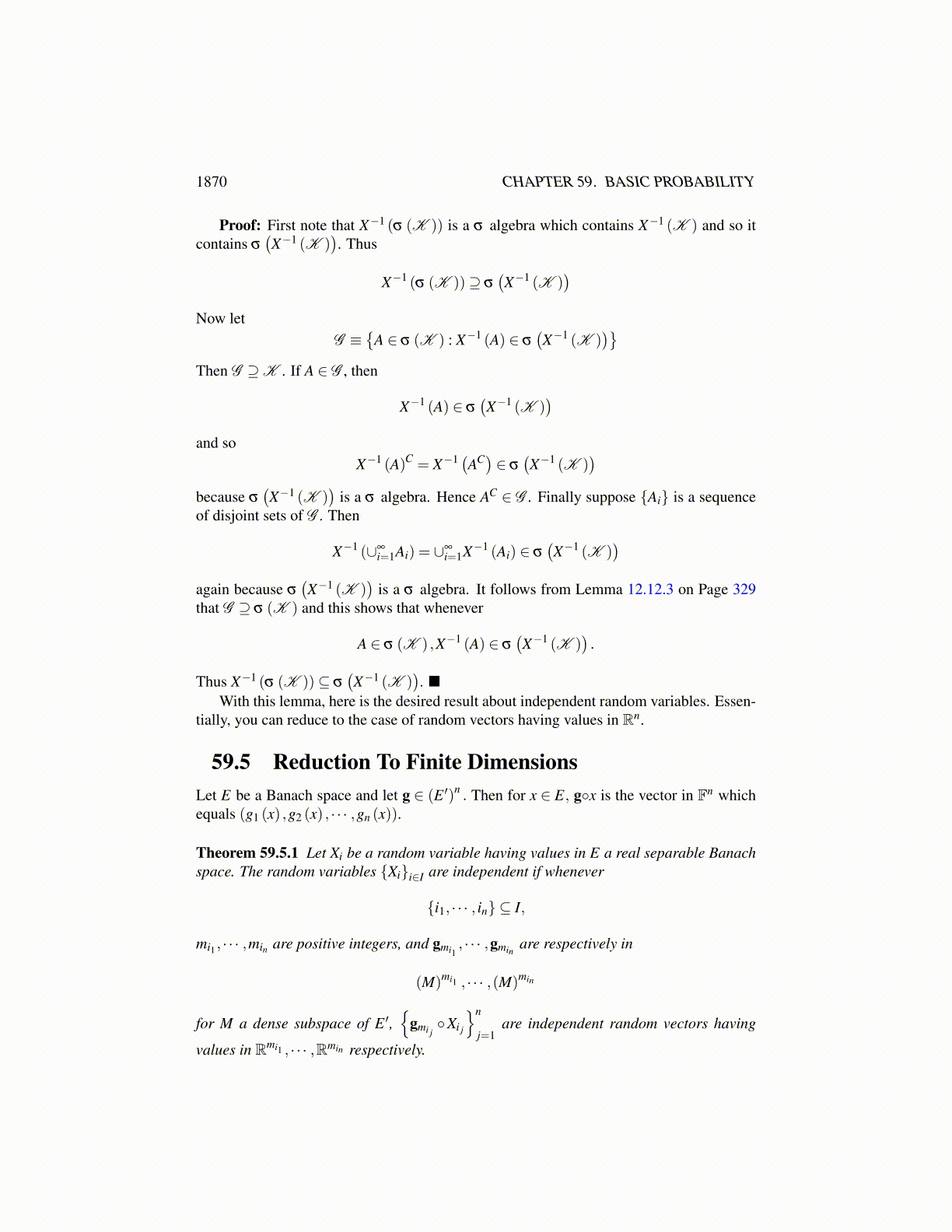
1870 CHAPTER 59. BASIC PROBABILITY
and so
P(∩n−1
k=1A jk ∩BC) =n−1
∏k=1
P(A jk
)(1−P(B))
=n−1
∏k=1
P(A jk
)P(BC)
showing if B ∈ G(A j1 ··· ,A jn−1
), then so is BC. It is clear that G(A j1 ··· ,A jn−1
) is closed with
respect to disjoint unions also. Here is why. If{
B j}∞
j=1 are disjoint sets in G(A j1 ···A jn−1
),
P(∪∞
i=1Bi∩∩n−1k=1A jk
)=
∞
∑i=1
P(Bi∩∩n−1
k=1A jk
)=
∞
∑i=1
P(Bi)n−1
∏k=1
P(A jk
)=
n−1
∏k=1
P(A jk
) ∞
∑i=1
P(Bi)
=n−1
∏k=1
P(A jk
)P(∪∞
i=1Bi)
Therefore, by the π system lemma, Lemma 12.12.3 G(A j1 ···A jn−1
) = F jn . This proves the
induction step in going from r−1 to r.
What is a useful π system for B (E) , the Borel sets of E where E is a Banach space?
Recall the fundamental lemma used to prove the Pettis theorem. It was proved on Page645.
Lemma 59.4.2 Let E be a separable real Banach space. Sets of the form
{x ∈ E : x∗i (x)≤ α i, i = 1,2, · · · ,m}
where x∗i ∈ D′, a dense subspace of the unit ball of E ′ and α i ∈ [−∞,∞) are a π system,and denoting this π system by K , it follows σ (K ) = B (E). The sets of K are examplesof cylindrical sets. The D′ is that set for the proof of the Pettis theorem.
Proof: The sets described are obviously a π system. I want to show σ (K ) containsthe closed balls because then σ (K ) contains the open balls and hence the open sets andthe result will follow. Let D′ be described in Lemma 21.1.6. As pointed out earlier it can